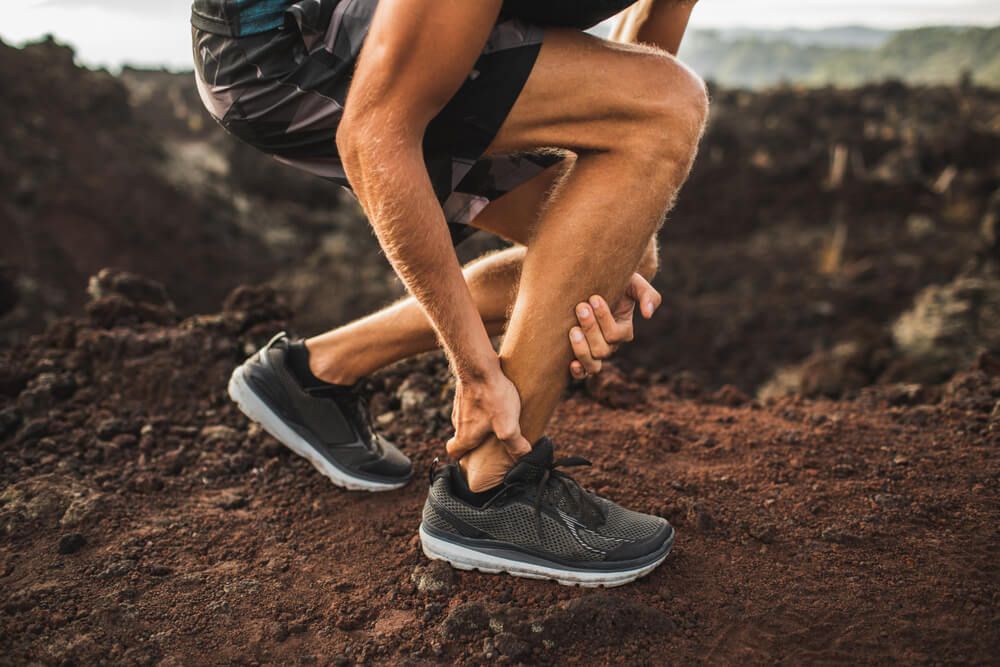Most active people have suffered an ankle sprain at one time or another accompanied by swelling, pain, weakness, and a long road to complete recovery! Many runners and athletes may find themselves more susceptible to future sprains and strains even after the initial problem has resolved. This is because soft-tissue healing can take anywhere from 12-18 months and there is usually always involvement of one or more ligament!
A bit about the anatomy of your ankles. The ankle is held together by several ligaments: on the inside of the ankle you have the deltoid ligaments (less likely to sprain) among others, and on the outside of the ankle you have the anterior and posterior talofibular ligaments a long with the calcaneofibular ligaments to name a few. Most sprains/strains of the ankle occur from excessive plantar flexion and inversion (about 80%) affecting the lateral ligaments (most commonly the anterior talofibular ligaments). These ligaments (even when over-stretched and not torn) take a very long time to heal and when no treatment is given to promote healing will cause the tissue to heal abnormally (think of a patch over a hole) causing less tissue extensibility and improper function. Remember, there is no blood supply to the tendon itself. Over-time this exacerbates muscle imbalances and leads to a chronic biomechanical deficit. This being said, some intervention is necessary to ensure that the tissue heals properly to prevent future sprain/strains.
In the early stages of an ankle sprain your doctor or therapist should advise a couple of days of rest and elevation. In addition to resting and elevating at home your doctor should also recommend manual therapy techniques to facilitate healing. This may include manipulation of the joint, traction, heat, myofascial release, and eventual therapeutic exercise. It is very important to address joint stiffness early on to ensure proper movement and healing.
“Weak ankles” become an issue when the tissues discussed above heal improperly; usually because no treatment was received. This will exacerbate existing muscle imbalances leading to dysfunction making you more susceptible to injury. The solution to this issue is to reestablish appropriate movement and fix muscle imbalances. Most athletes I see that suffer from chronic ankle sprains exhibit deficits in their gait, hips, and lower leg muscles. These deficits have likely been an issue for a long time and have continued to build until an injury occurs.
Does this sound like you? First, have your gait evaluated by your doctor or therapist, then try these simple drills to help balance the muscles in your feet and lower leg. You will notice a stronger, more athletic ankle!
All drills to be performed shoes-off (except for walking on your heals) and for a length of about 25 meters; preferably on grass or any hard surface:
- Walk with feet inverted
- Walk with feet toe-in
- Walk backwards on your toes
- Walk with feet everted
- Walk with feet toe-out
- Walk on heels

